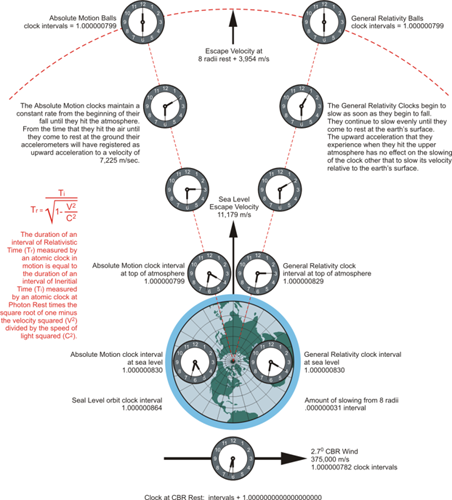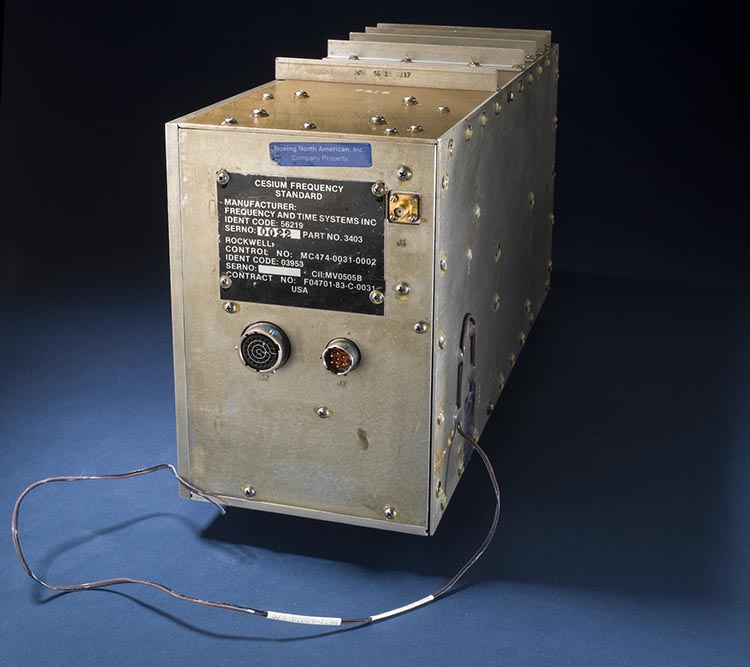The Satellite Clock Bias, dt
One of the largest errors can be attributed to the satellite clock bias. It can be quite large, especially if the broadcast clock correction is not used by the receiver to bring the time signal acquired from a satellite’s onboard clock in line with GPS time. As time is a critical component in the functioning of GPS, it is important to look closely at the principles behind this bias.
The onboard satellite clocks are independent of one another. While GPS time itself is designed to be kept within one microsecond, 1 µsec or one-millionth of a second, of UTC, excepting leap seconds, the satellite clocks can be allowed to drift up to a millisecond, 1 msec or one-thousandth of a second, from GPS time. They are allowed to drift within this tolerance because the Control Segment doesn't want to constantly tweak the clocks, as this would cause the clocks to deteriorate more rapidly. Although the GPS satellites have been robust, I think it's fair to say that the clocks are one of their more fragile components. Instead, we have the broadcast clock correction in the Navigation Message. This is the correction that the Control Segment provides to the receiver to use to bring the satellite clock in line with GPS time.
Relativistic Effects on the Satellite Clock
Albert Einstein’s special and general theories of relativity apply to the clocks involved here. At 3.874 kilometers per second, the clocks in the GPS satellites are traveling at great speed, and that makes the clocks on the satellites appear to run slower than the clocks on earth by about 7 microseconds a day. However, this apparent slowing of the clocks in orbit is counteracted by the weaker gravity around them. The weakness of gravity makes the clocks in the satellites appear to run faster than the clocks on earth by about 45 microseconds a day. Therefore, on balance, the clocks in the GPS satellites in space appear to run faster by about 38 microseconds a day than the clocks in GPS receivers on earth. So, to ensure the clocks in the satellites will actually produce the correct fundamental frequency of 10.23 MHz in space, their frequencies are set to 10.22999999543 MHz before they are launched into space.
There is yet another consideration, the eccentricity of the orbit of GPS satellites. With an eccentricity of 0.02, this effect on the clocks can be as much as 45.8 nanoseconds. Fortunately, the offset is eliminated by a calculation in the GPS receiver itself; thereby avoiding what could be ranging errors of about 14 meters. The receiver is moving, too, of course, so an account must be made for the motion of the receiver due to the rotation of the earth during the time it takes the satellite's signal to reach it. This is known as the Sagnac effect, and it is 133 nanoseconds at its maximum. Luckily, these relativistic effects can be accurately computed and removed from the system.

